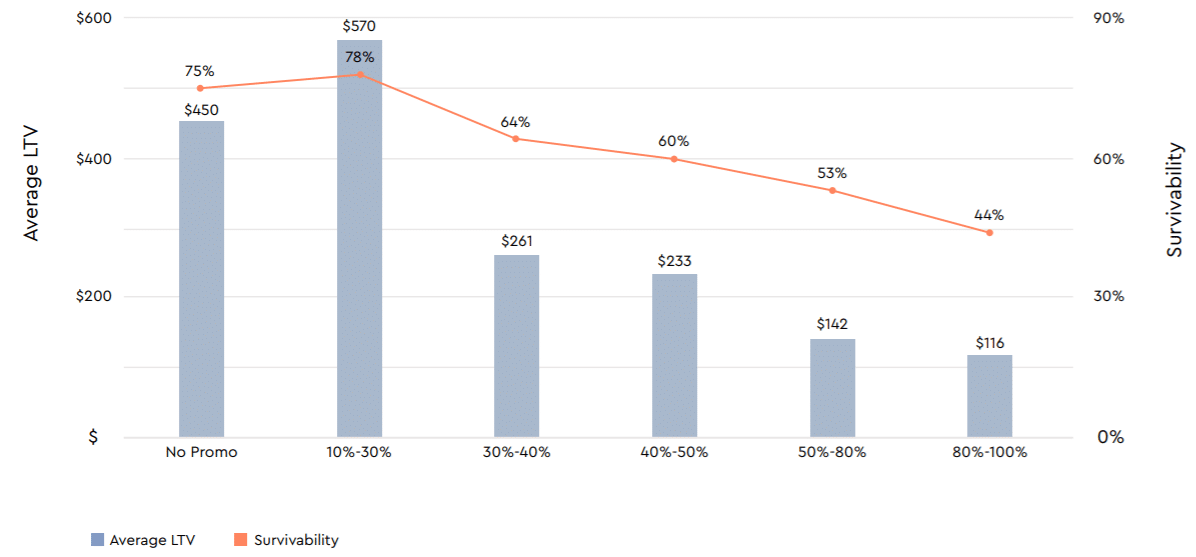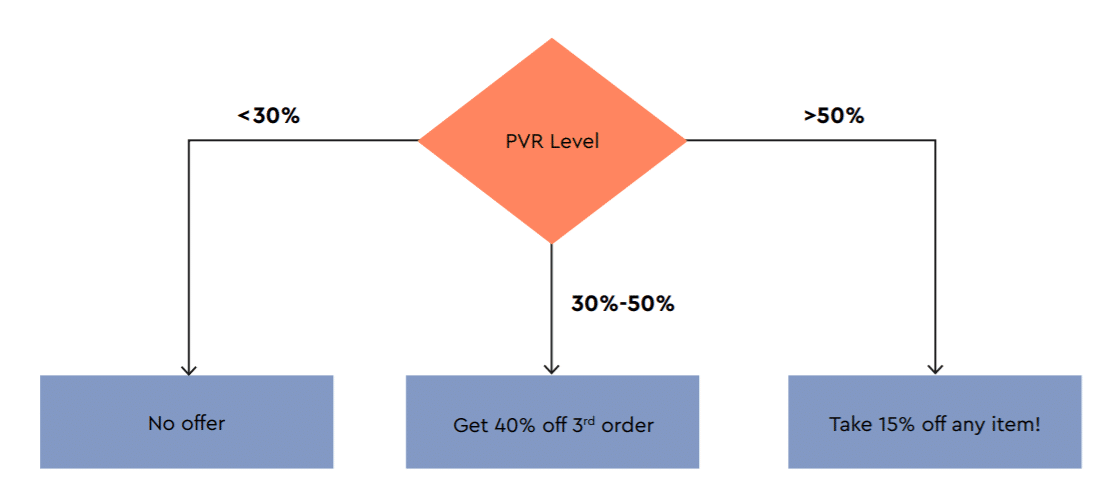
AI and the Retail Marketer’s Future
How AI transforms strategy and processes, driving the adoption of Positionless Marketing
Exclusive Forrester Report on AI in Marketing

Acquiring new customers is core to every business. The problem is, customer acquisition costs have been increasing due to intense competition for customer attention and wallet share. With so many food delivery options out there when we no longer get to enjoy restaurant dining fully – brands must rise above the noise.
Most direct-to-consumer food delivery companies leverage promotions to entice new customers. Some even acquire 87% of new customers through the use of a promotion when placing the first order. However, not all promotion-based acquisitions should taste the same.
Here’s why.
Using Optimove, the marketing team of one food delivery service analyzed the impact of acquisition promotions on customer lifetime value and retention. The marketers created a customer attribute called Promotion Value Ratio (PVR), which is the proportion of the promotion from a customer’s first order value.
As seen in the chart below, customers who either did not use a promotion or had a PVR of less than 30% showed significantly higher lifetime value. Furthermore, they discovered that the lower the PVR, the higher the customer survivability rate.

With Optimove, you can leverage insights like these to improve customer acquisition and post-purchase strategies.
On the acquisition side, you can:
On the post-purchase side, you can tier customers and create different campaigns to be sent to each tier on the day after each customer’s first purchase. All based on each one’s specific characteristics. See below:
Since these customers are predicted to make significant additional purchases without incentives, providing them with discounts is likely to reduce profit margins. Instead, communications with them should focus more on providing a good experience, such as personalized recommendations of other tasty restaurants in the same food category.
Since these customers are predicted to spend more on additional purchases, you should focus on modest incentives. For instance, you can run a promotion along the lines of “Order twice and get 10% off on your third order.”
Since these customers are predicted to generate the least additional revenue and are less likely to order again, communications should focus on providing significant incentives.

This food delivery service’s marketers used Optimove insights to improve customer acquisition and post-purchase strategies. All while saving money on promotions and treating each customer segment differently. It is just a small taste of how food delivery service providers can leverage customer data to generate insights that lead to more effective customer marketing.
Exclusive Forrester Report on AI in Marketing
In this proprietary Forrester report, learn how global marketers use AI and Positionless Marketing to streamline workflows and increase relevance.


Rony Vexelman is Optimove’s VP of Marketing. Rony leads Optimove’s marketing strategy across regions and industries.
Previously, Rony was Optimove's Director of Product Marketing leading product releases, customer marketing efforts and analyst relations. Rony holds a BA in Business Administration and Sociology from Tel Aviv University and an MBA from UCLA Anderson School of Management.


